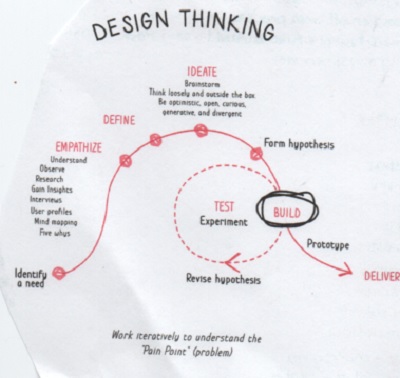Technique 2.91 Design Thinking
Introduction
Design Thinking is linked with the user experience, consumer needs and creativity to find innovative solutions. A user-centred approach is required in order to empathise with and understand the user and their pain points. This involves sustained interactions including interviewing, observing and researching.
It is a process that involves different stages: empathise, define, ideate, build, test and deliver. The process is iterative and fluid. It is not a gated, sequential process; the steps are not usually linear - they can be in parallel and steps can be iterated and repeated as required.
There are clear parallels between the McKinsey's framework on problem-solving (see Framework 79) and design thinking"...define steps correspond closely to the problem statement approach; the ideate step is akin to our process to break down a problem around hypothesis and then test; and rebuild and deliver steps correspond to our work planning and analysis step......design thinking is highly iterative, revisiting earlier stages as knowledge accumulates..."
Charles Conn et al 2018

The sequence starts with understanding the potential users' needs
"...empathising with the people you want to serve, learning what their needs are, recognising why the product or solution could be relevant, and how it will be used......the cycle is to emphasise and then build-test-redefine, and build-test-redefine again..."
Charles Conn et al 2018
You need to make decisions on more than historical data and instinct. Decisions tend to evolve based on evidence from trial and error, eg iterating with prototypes.
Use challenging antithesis or counter-factual approaches to test the problem statement's robustness.
(sources: Charles Conn et al 2018)
